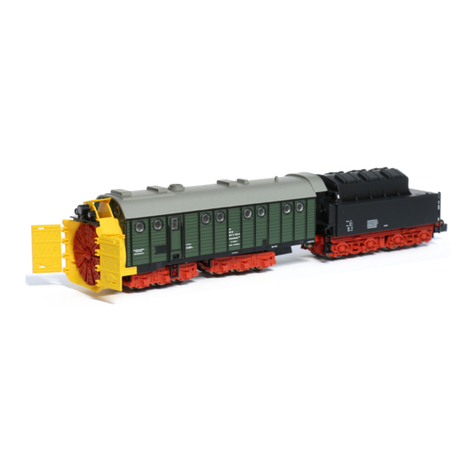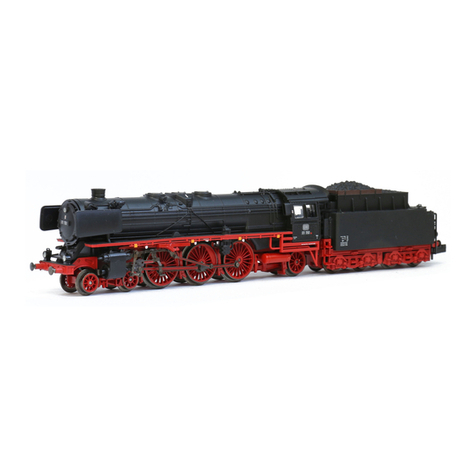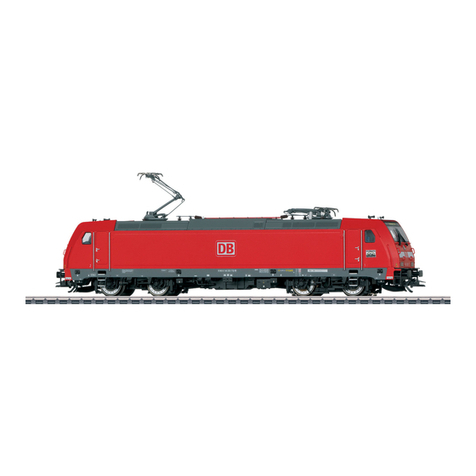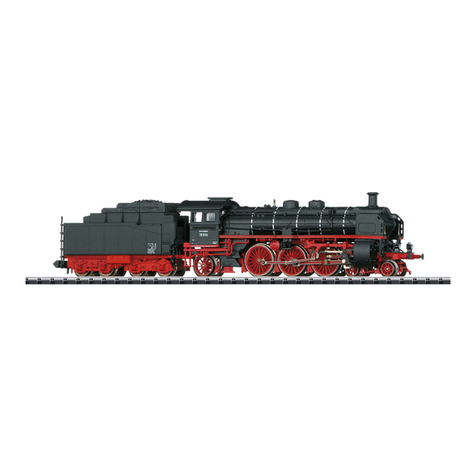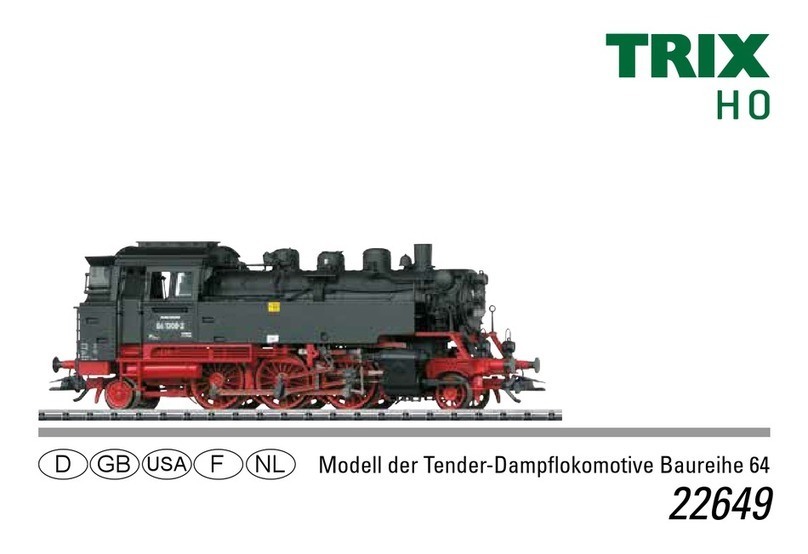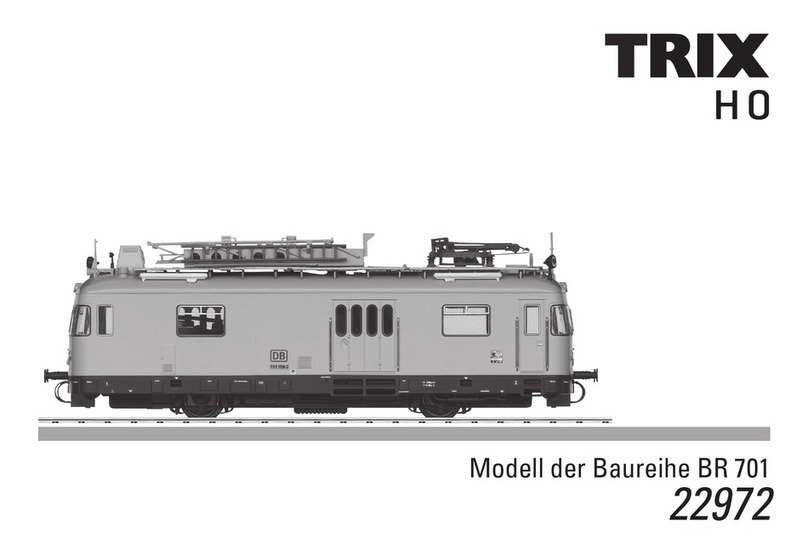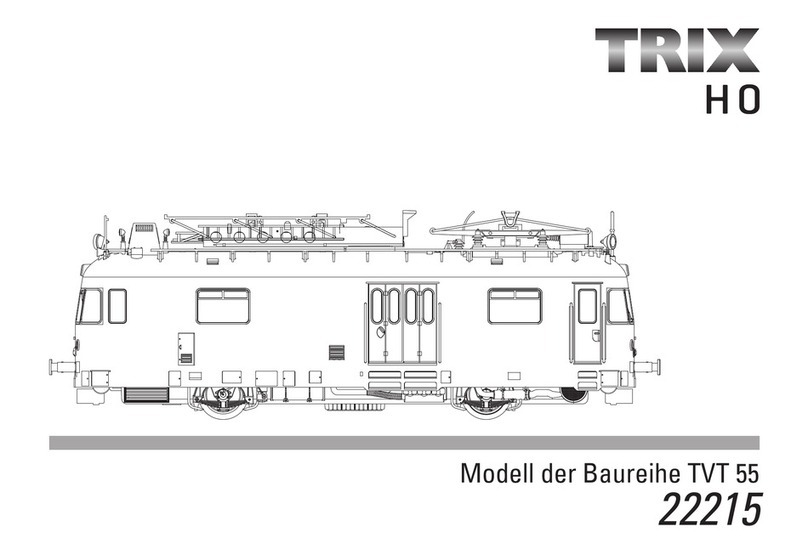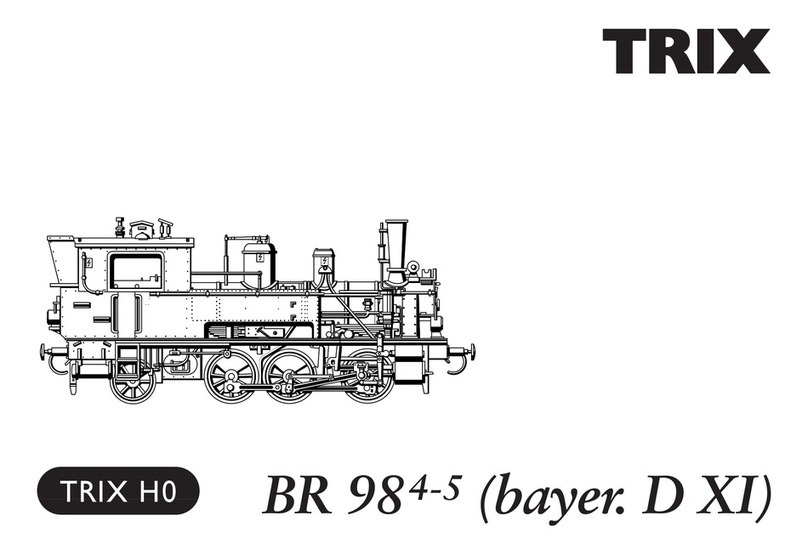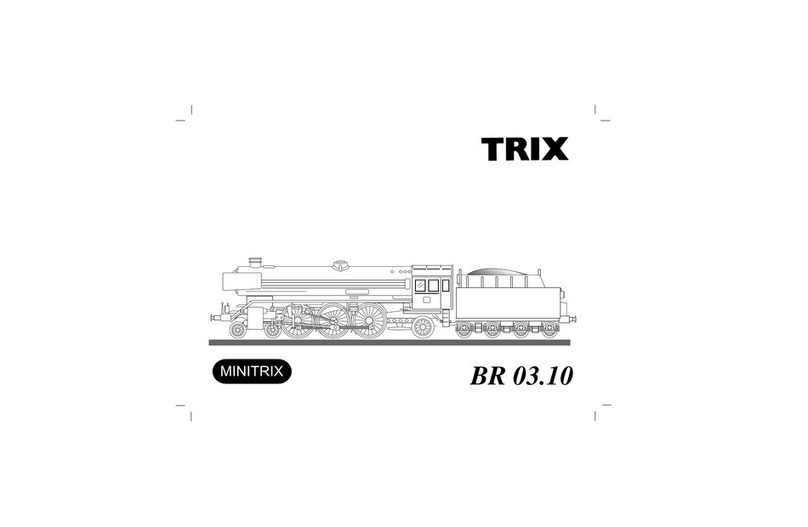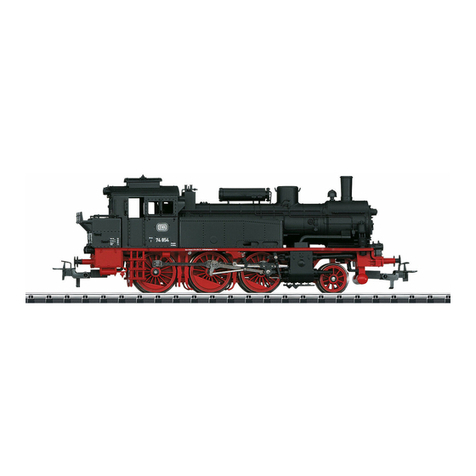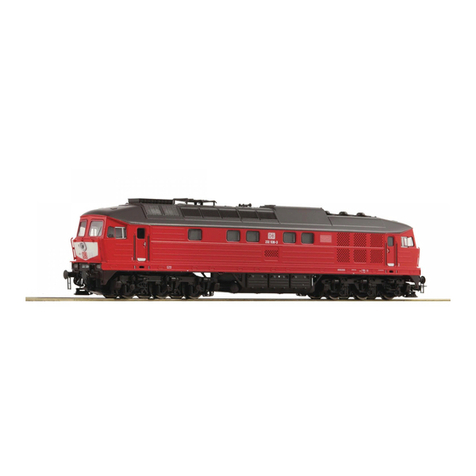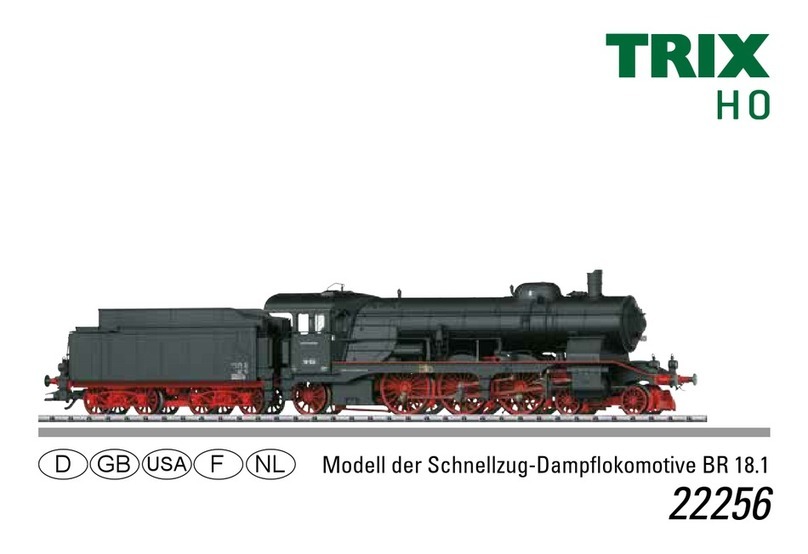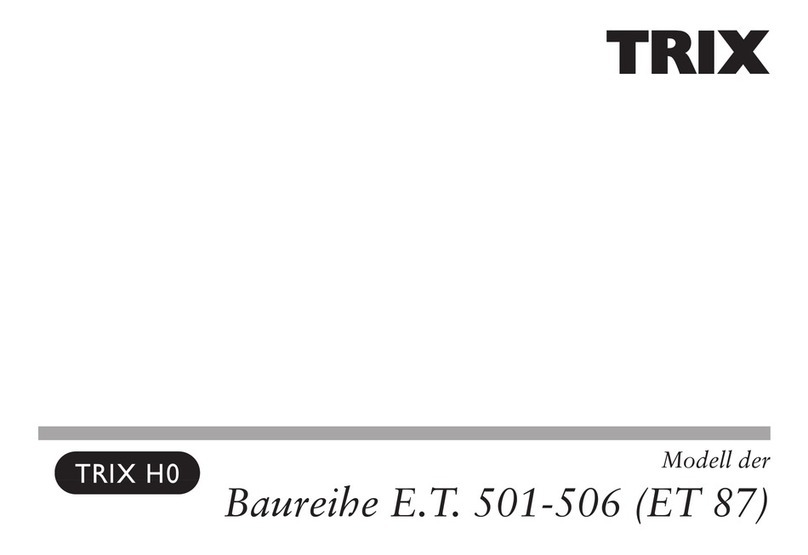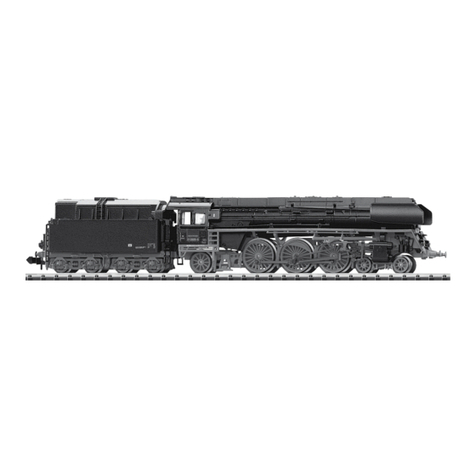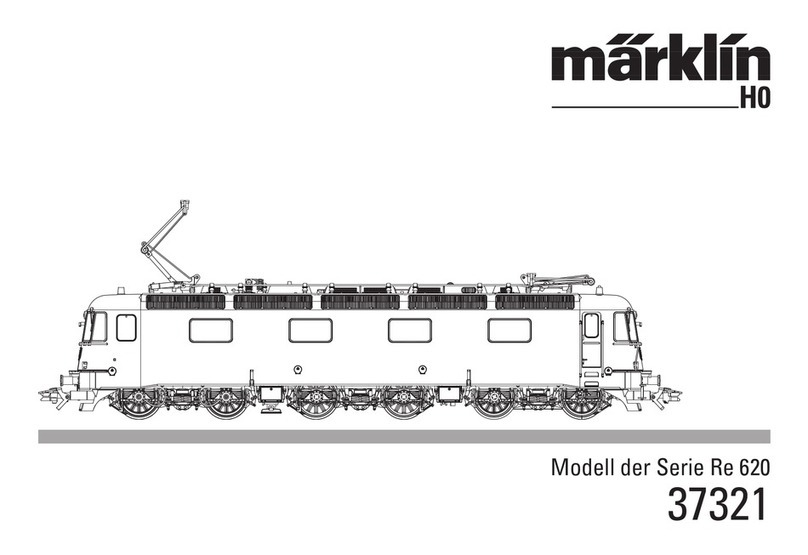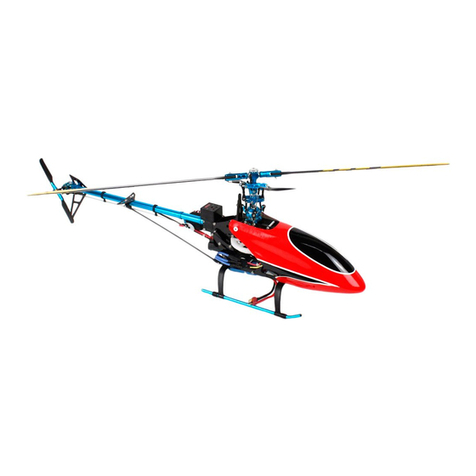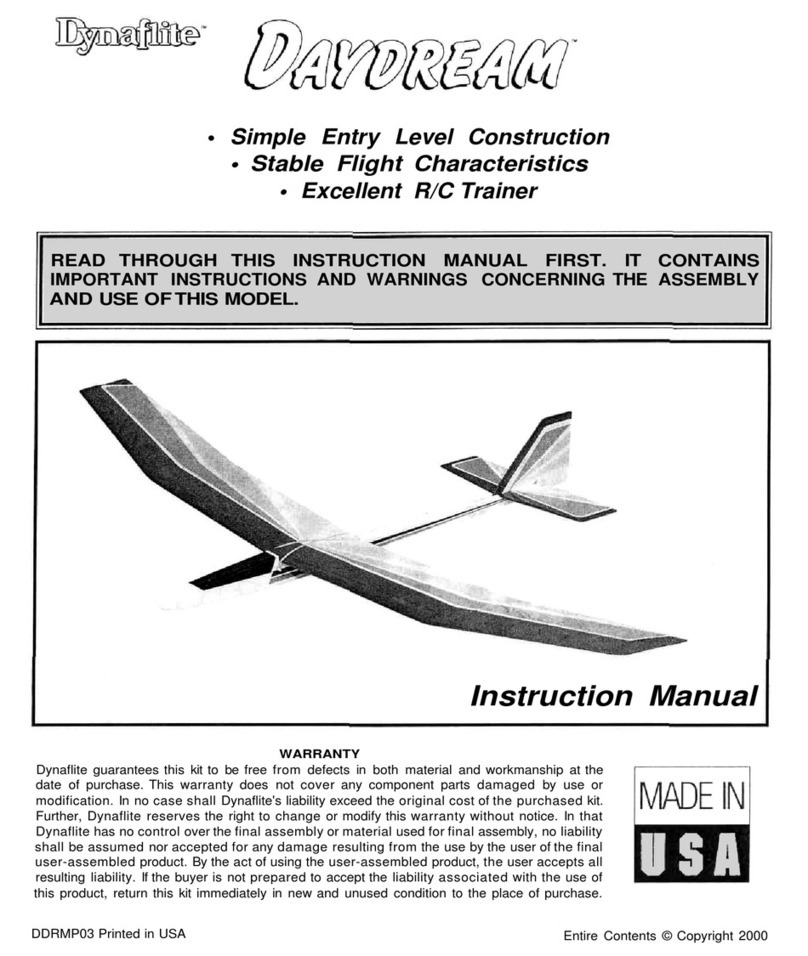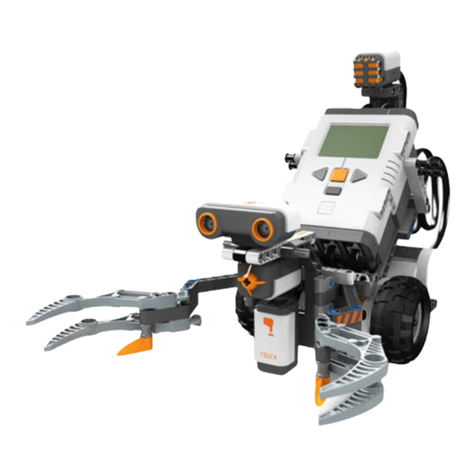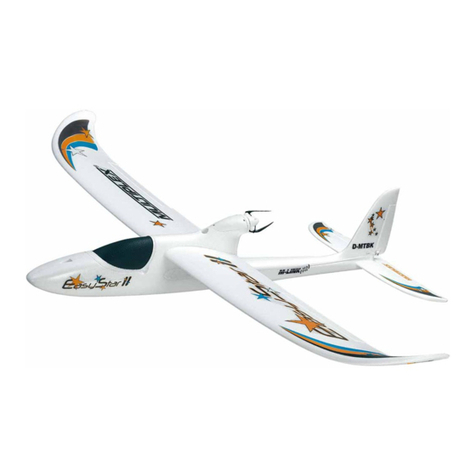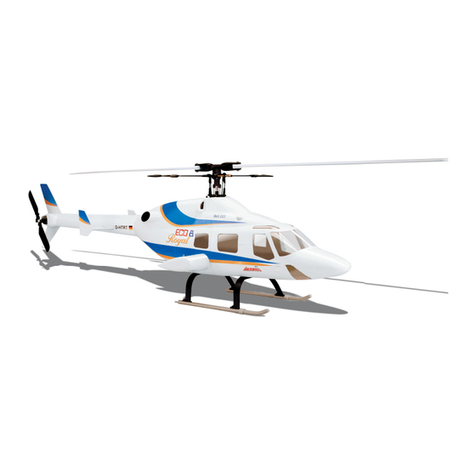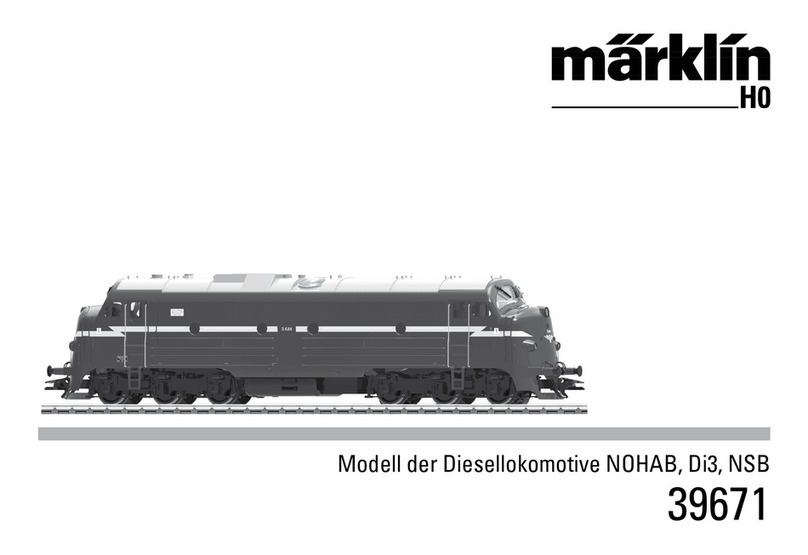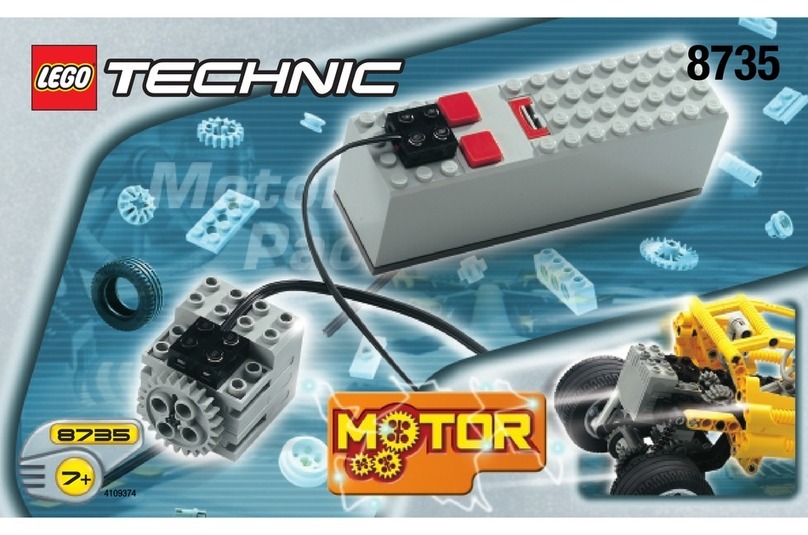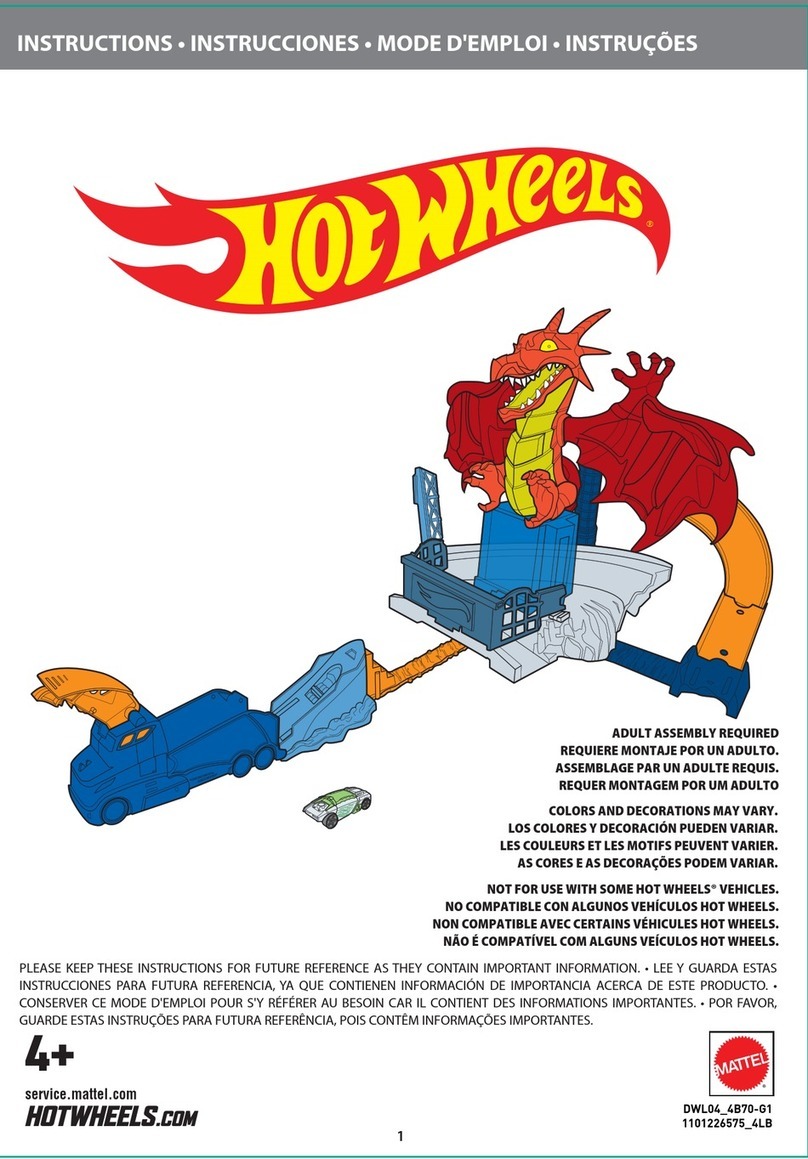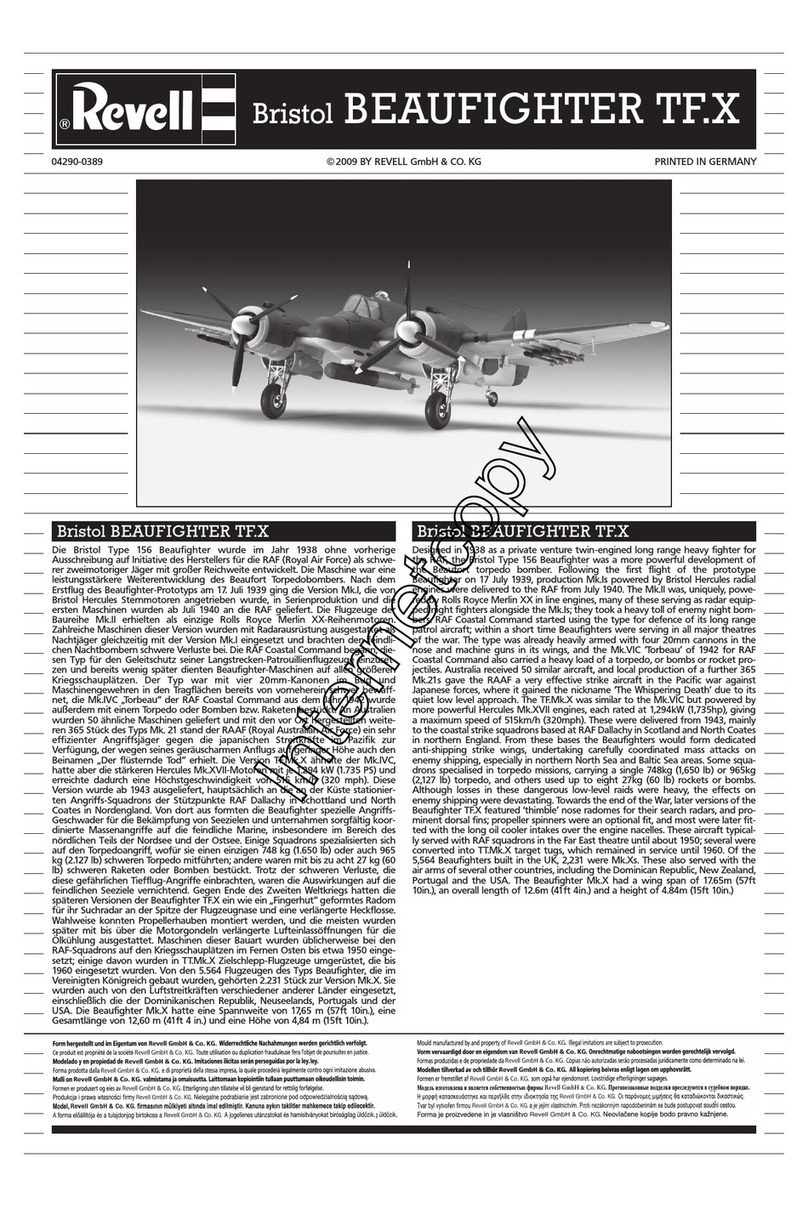
4
Informationen zum Vorbild
Nach einer Unterbrechung durch die große Wirtschaftskrise
wurde ab 1930 die Elektrifizierung des Reichsbahn-Netzes
wieder vorangetrieben. Für die neuen Strecken wurden neue
leistungsfähige Lokomotiven benötigt. In der Zwischenzeit hatte
die deutsche Eisenbahnindustrie Konzepte und Prototypen für
moderne Universallokomotiven entwickelt.
Die Konstruktion von Siemens zeigte deutliche Fortschritte
gegenüber den zuvor nur weiter entwickelten Länderbahn-
Konstruktionen. Die als leichte Universallokomotive konzipierte
Maschine war auf einem geschweißten Rahmen aufgebaut,
auf Drehgestellen mit integrierter Pufferbohle gelagert und mit
Tatzlager-Motoren auf den Achsen angetrieben. Die modernen
Motoren leisteten 2.200 kW, die ohne aufwändige Mechanik
direkt an den Achsen verfügbar waren. Auf ebener Strecke
wurden 90 km/h erreicht.
Die erste Maschine wurde mit Erfolg getestet und noch 1930 von
der Reichsbahn als E 44 001 übernommen. Weitere Lokomotiven
in Serienausführung mit 80 km/h Höchstgeschwindigkeit wurden
umgehend bestellt, zunächst für die Strecke Stuttgart – Augs-
burg (mit der Geislinger Steige). Die Reichsbahn hatte insgesamt
174 Serienloks beschafft, von denen 45 in Ostdeutschland geblie-
ben sind, die meisten übrigen im Westen.
Information about the prototype
After an interruption due to the great economic crisis, the elec-
trification of the German State Railroad’s network was continued
starting in 1930. New, powerful locomotives were needed for the
new routes. In the meantime the German railroad industry had
developed new concepts and prototypes for modern general
purpose locomotives.
This design from Siemens shows clear progress compared to
the provincial railroad designs of before that had been merely
developed further. This unit was designed as a general purpose
locomotive and was built on a welded frame, mounted on trucks
with integrated buffer beams and powered with axlesuspended
motors. The modern motors put out 2200 kilowatts (2950 horsepo-
wer) that was available directly to the axles without the need for
an expensive mechanism. The maximum speed reached on level
track was 90 km/h (56 mph).
The first unit was successfuly tested and placed into service
by the German State Railroad as early as 1930 as the E 44 001.
Additional, regular production locomotives with a maximum
speed of 80 km/h (50 mph) were ordered immediately, initially for
the route from Stuttgart to Augsburg (with the Geislingen Grade).
The German State Railroad purchased a total of 174 regular
production locomotives, of which 45 remained in East Germany
with most of the rest in the West.


